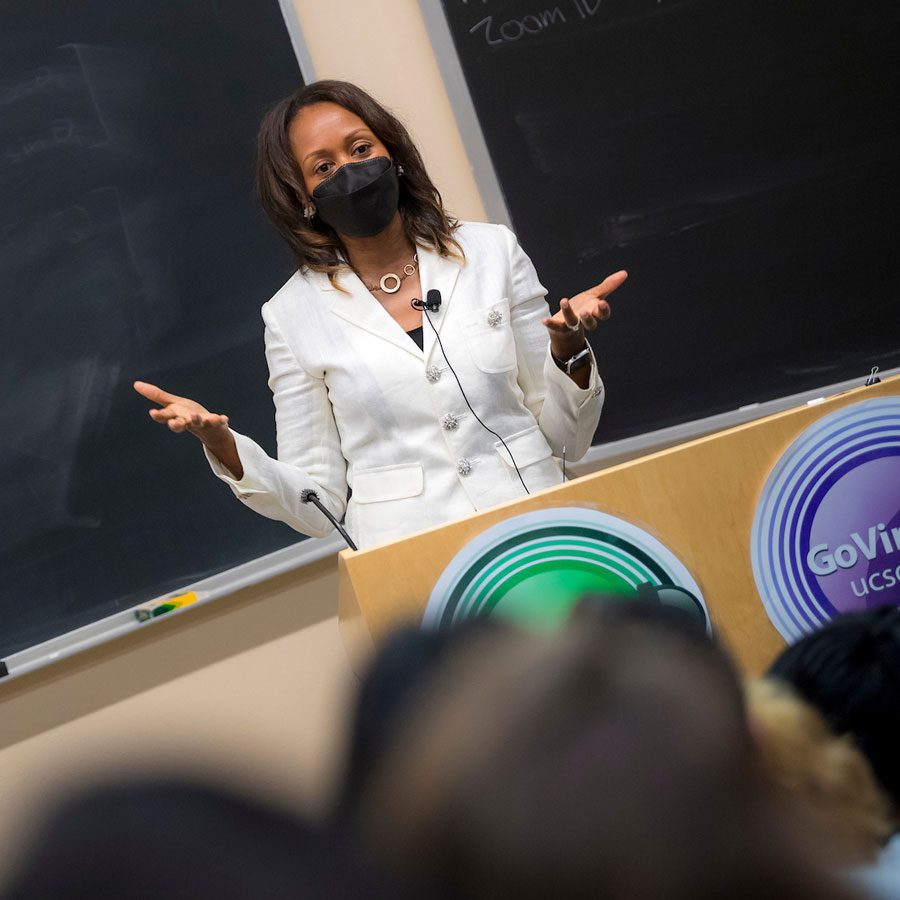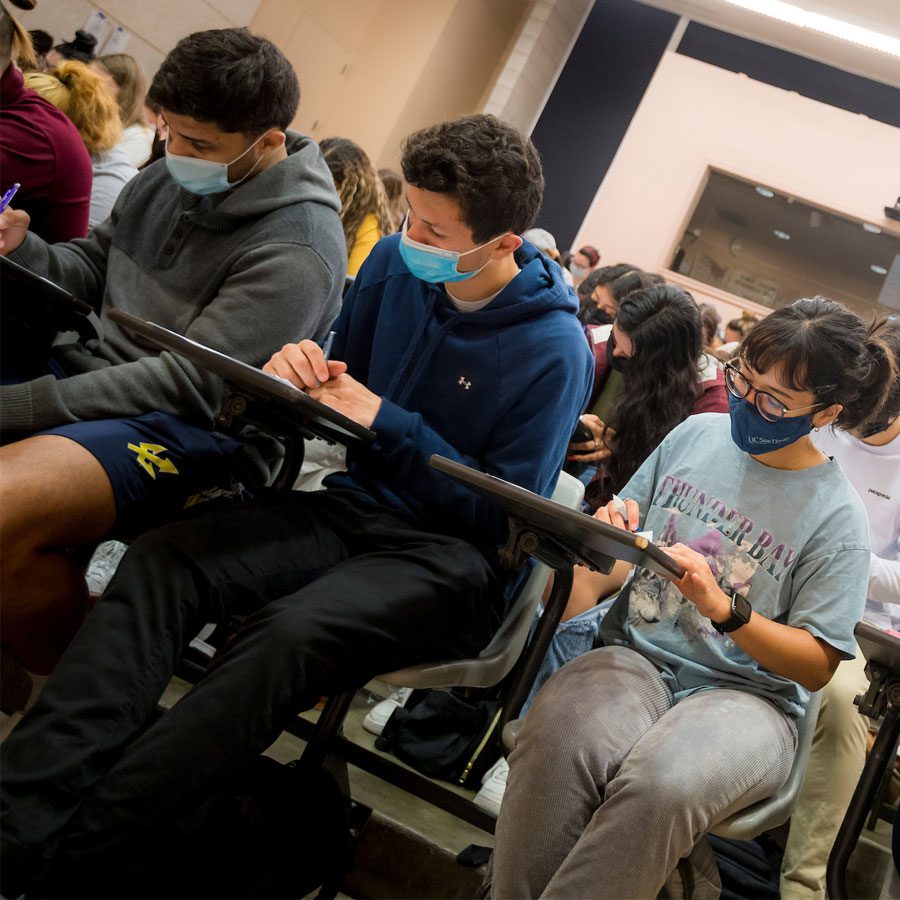The Promise of Public Health: A School Reenvisioned
A Unifying Entity for Public Health Education and Research Across the University
By Cheryl A.M. Anderson, PhD, professor and founding dean of the Herbert Wertheim School of Public Health and Human Longevity Science, inaugural Hood Family Endowed Dean’s Chair in Public Health
Since 1966, the discipline of public health has been administratively housed within the School of Medicine and has grown over time. When it became evident that a school of public health was viable and could be a unifying entity for public health education and research across the campus, a school of public health was proposed.
The Herbert Wertheim School of Public Health and Human Longevity Science at UC San Diego was established on September 19, 2019 as the third school of public health in the University of California system. We proposed to work collaboratively for greater impact in the state and our hometown. We are well-positioned to enable people and recreate systems that will foster a more just and healthy world.
The Herbert Wertheim School of Public Health held its first classes – academic year ’20-’21 – amidst global efforts to mitigate the pandemic SARS-CoV-2 and the disease it causes, COVID-19, and during an intense national conversation about anti-Black racism as well as structural and systemic racism. This context shaped the curriculum and demanded dramatic changes to teaching and learning.
It quickly became apparent that the community public health efforts necessary to mitigate rapid spread of the virus, hospitalizations and deaths would require students from the schools of pharmacy, public health and medicine to transition to remote teaching and learning for the remainder of the spring quarter.

Evolving science and availability of protective tools would improve clinical care, reduce deaths and ease the burden on health care and public health systems. But we would also learn a lot about how our community could live with the virus. Under extraordinary circumstances, UC San Diego became a trailblazer in efforts to provide a place of refuge for students facing unforeseen challenges, from food and housing insecurity to physical and emotional abuse. The campus became a refuge and respite, albeit one filled with the promises and perils of being a pioneer.
In May 2020, Return to Learn debuted as a bold initiative to return students to campus and learning during the pandemic. It was designed to be adaptive and responsive to changes in the local epidemiology of COVID-19. It focused on risk mitigation, viral detection and public health intervention. Every sector of the campus was engaged in preparations for mass testing, delivery of student health services, housing, dining, isolation and quarantine resources, symptoms monitoring, wastewater surveillance and reporting our daily status on a public dashboard. These efforts transcended everyone’s routine job assignments. It was service to an educational mission bigger than oneself.
By fall 2020, students were presented with the option to return to campus or continue to learn remotely. We welcomed back almost 10,000 students, roughly two-thirds of whom lived on campus. Inside and outside of classroom, our students, staff and academics demonstrated extraordinary resilience, creativity and commitment.
We at the Herbert Wertheim School of Public Health partnered with the San Diego County Department of Public Health for contact tracing among those ages 18 to 24 years. A great deal of the success of any public health program relies on human behavior that considers the needs of others. Our students’ behaviors were exemplary.
For much of the fall and winter seasons, the highest prevalence of COVID-19 in San Diego (and across the region and country) was in those 18 to 24 years old, yet there were very few outbreaks on campus — and none traced to our classrooms. Our students adhered to rigorous testing, isolation, quarantine and monitoring protocols, and their dedication showed.
UC San Diego’s educational programs attract students from all over the world. Meeting these diverse needs requires flexibility. During the pandemic, some classes were in person in rooms modified to maintain physical distance; some were in specially prepared outdoor settings. Some classes used a hybrid format with some students in person and others joining lectures remotely. Yet others were fully online.
Our response to the pandemic has perhaps permanently changed the way students will learn and faculty will teach at UC San Diego.
Across the campus, we emphasized proper hygiene, sanitation, face coverings and appropriate personal protective equipment. The Teaching+Learning Commons tool assisted instructors with developing strategies for impactful remote instruction. Our faculty and staff swiftly rose to meet the challenges they faced.
Professors and instructors who, prior to the pandemic, could not have envisioned teaching students online or in hybrid formats reinvented their courses and themselves. They designed lessons that were adaptable to a range of student needs and teaching formats. They ensured high-quality interactions using virtual whiteboards, chat features and breakout rooms to stimulate conversation and creative engagement.
Our response to the pandemic has perhaps permanently changed the way students learn and faculty teach at UC San Diego. In a stressful time without precedent, we became even more adaptive, more considerate of student needs and more conscious of our impact as educators — regardless of setting.
I hope we will sustain the best of the educational practices learned over the pandemic. Going forward, they will help us reduce inequities in student access and increase the reach and impact of UC San Diego’s educational programs in public health and other health sciences.

